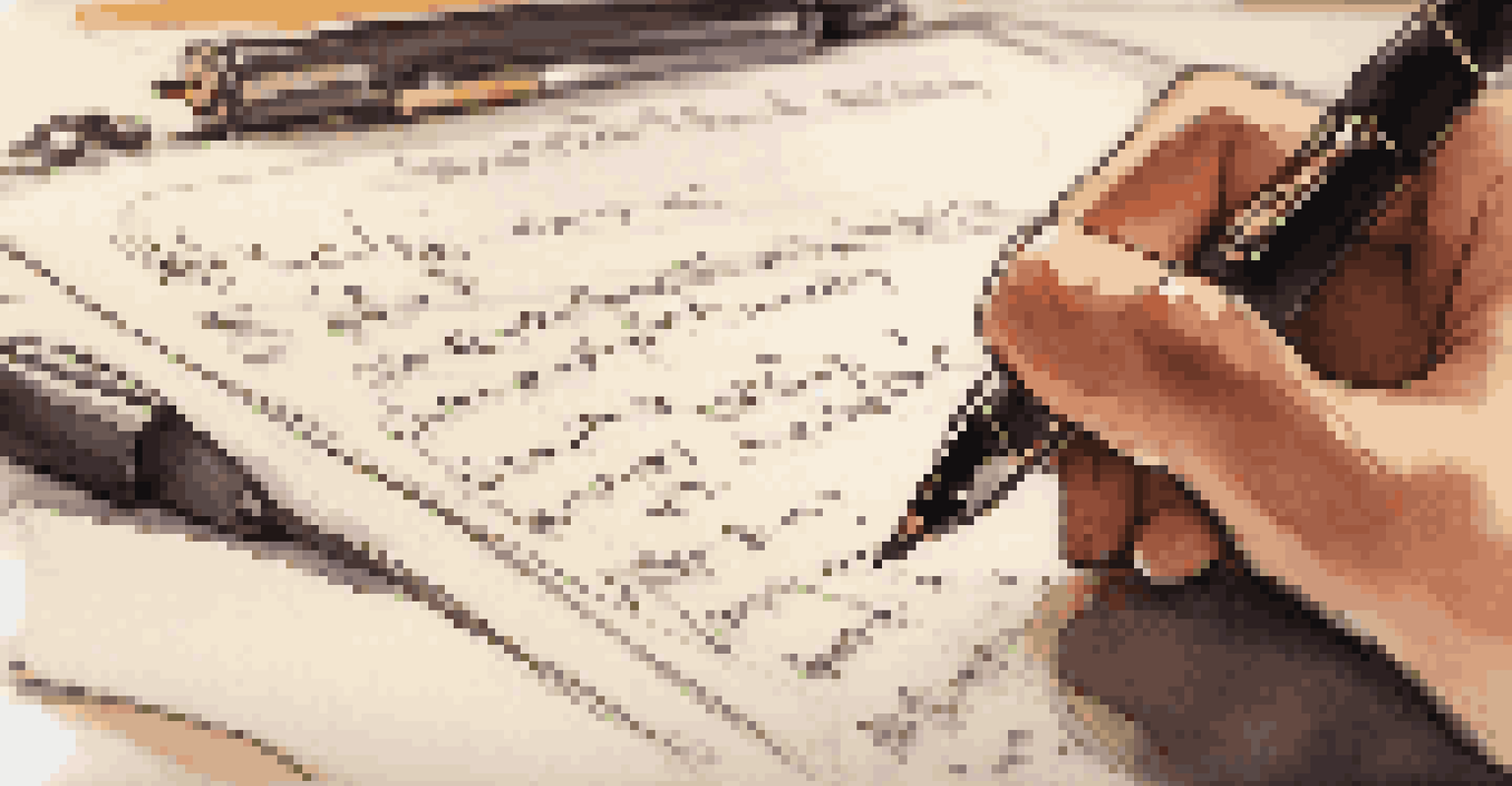Tailoring Your Cover Letter Using Job Description Insights

Understanding the Importance of Tailoring Your Cover Letter
A tailored cover letter can make all the difference in your job application. When you customize your letter, you show potential employers that you are genuinely interested in their company and the specific role. This effort can set you apart from candidates who send generic applications.
A cover letter is a chance to express your personality and passion for the job at hand.
Employers often receive hundreds of applications, and many of those are cookie-cutter letters. By taking the time to personalize your cover letter, you demonstrate your attention to detail and commitment to the position. This can create a positive first impression before an interview even takes place.
Tailoring your cover letter also allows you to highlight your most relevant skills and experiences. Instead of listing everything you've done, you can focus on what matters most for the job at hand, making it easier for hiring managers to see your fit for their team.
Decoding the Job Description: Key Insights to Use
The job description is your roadmap for tailoring your cover letter. It contains valuable information about the skills, qualifications, and attributes that the employer is seeking. By analyzing this document, you can pinpoint what to emphasize in your writing.

Look for keywords and phrases that stand out in the job description. These can often be terms that relate to specific skills or experiences. Incorporating these keywords into your cover letter not only shows that you understand the role but also helps your application get noticed by Applicant Tracking Systems (ATS) used by many companies.
Tailor Your Cover Letter
Customizing your cover letter shows genuine interest and sets you apart from generic applications.
Additionally, pay attention to the company culture and values mentioned in the job description. Aligning your cover letter with those values can enhance your appeal, demonstrating that you would be a good cultural fit for the organization.
Crafting a Compelling Opening Paragraph
Your opening paragraph is your chance to grab the reader’s attention right away. Start by mentioning the position you’re applying for and where you found the job listing. This establishes context and shows that you’ve done your homework.
Your cover letter should be a reflection of your enthusiasm and your understanding of the company’s needs.
Consider adding a personal touch by including a brief anecdote or a statement about why you’re passionate about the role or the company. This can make your opening more engaging and memorable, setting the tone for the rest of the letter.
Finally, succinctly outline what makes you a strong candidate for the position. This not only piques the reader’s interest but also gives them a reason to continue reading your cover letter.
Highlighting Relevant Skills and Experiences
In the body of your cover letter, focus on the skills and experiences that directly relate to the job description. Choose two or three key qualifications that the employer is looking for and elaborate on how your background aligns with those needs.
Use specific examples to illustrate your points. For instance, if the job requires strong project management skills, share a brief story about a time when you successfully led a project. This not only adds authenticity to your application but also allows the employer to envision you in the role.
Analyze Job Descriptions
Understanding job descriptions helps you highlight relevant skills and align with company values.
Remember to connect the dots for the reader. Clearly explain how your experiences prepare you for the challenges of the new position, reinforcing your potential value to the company.
Demonstrating Knowledge of the Company
Employers appreciate candidates who take the time to research their organization. Showcasing your knowledge of the company in your cover letter indicates that you are genuinely interested and have invested effort in understanding their mission and goals.
You can mention recent company news, projects, or values that resonate with you. This creates a connection and demonstrates that you are not just looking for any job, but are specifically interested in contributing to their team.
Moreover, aligning your skills with the company’s objectives can strengthen your case. Discuss how you can help the organization achieve its goals, which can position you as a valuable asset.
Concluding with a Strong Closing Statement
Your closing paragraph is your final opportunity to make an impression. Reiterate your enthusiasm for the position and express your desire for an interview to discuss your application further. This not only shows confidence but also a proactive attitude.
You can also mention your availability for an interview, indicating that you are ready to take the next step. This can help facilitate the hiring process and show that you are serious about the opportunity.
Proofread for Professionalism
Thorough proofreading ensures your cover letter is free of errors, reflecting your attention to detail.
Finally, thank the employer for considering your application. A courteous closing leaves a positive impression, reinforcing your professionalism and respect for their time.
Proofreading and Editing Your Tailored Cover Letter
Once you’ve drafted your cover letter, it’s essential to proofread and edit it carefully. Mistakes in your letter can detract from your professionalism and may lead employers to question your attention to detail. Take the time to read through your letter multiple times.
Consider using online tools or asking a friend to review your cover letter. A fresh set of eyes can catch errors you might overlook and provide feedback on clarity and flow, ensuring your message is communicated effectively.

Lastly, ensure that your cover letter aligns with the tone and style of your resume. Consistency in presentation helps create a cohesive personal brand, making your application stand out even more.